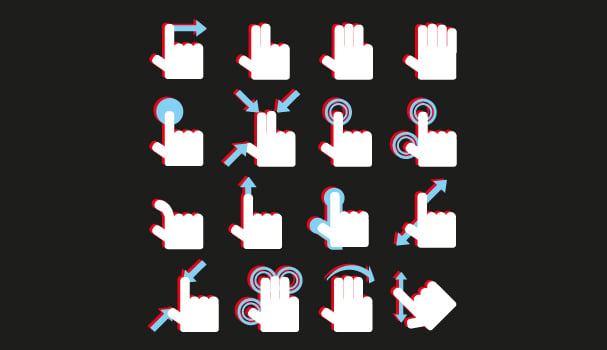It’s hard to deny that marketing has been going through a pretty major transition. As far back as 2007, respected ad guru and co-founder of agency BBH John Hegarty was quoted within the pages of The Guardian saying that we had “moved from the age of interruption to the age of engagement”. Directly engaging the consumer instead of subjecting them to marketing monologues has gradually crept up the agenda, until few agencies worth their salt would put together a campaign without consideration of how they can use it to solicit consumer response. But why has there been such a shift away from interruptive techniques?
Formerly, interruption was the bread and butter of advertising firms. Techniques largely involved interrupting consumers as they went about their lives, whether that was whilst they watched TV, read a magazine or even via out-of-home media in the form of billboards. Marketing agencies knew they could rely on the public seeing and absorbing their advertisements; interruptive marketing was a surefire solution for extending brand reach. And, in part, this came from the knowledge that they had an entirely captive audience.
“Interruptive marketing was really effective because marketeers and media were in total control of what information was released when,” says Alice Driscoll, managing director of content marketing agency pd3. “When a TV ad was broadcast you knew you had X% of the total population. So you could hit a large number of people guaranteed during every episode of Coronation Street.”
But, of course, over the last few decades the picture has shifted rapidly. We have jumped from four channels to hundreds and consumers’ primary information source has become the internet, putting the power of choice back in their hands. “People are more likely to go out and find out what other people think about a brand or look on the net,” comments Jason Suttie, principal and digital engagement specialist at digital engagement agency Copper. “Things such as search have become a lot more useful because people drive their own searches, hunting things down themselves rather than getting all the information thrown at them in one go.”
Driscoll agrees that it is this power shift that has really weakened the power of advertising to interrupt our daily experiences. “That’s put all of the power and control in the consumers’ hands because it’s a 24/7 culture,” she says. If a consumer wants to get away from an interruptive message, they only need to change channels or install an ad-blocker on their home computers, meaning the days of brands being able to insist themselves on the consumer is long gone. “We’re now able to choose when we interact with the brand – it’s not up to the brand to decide when they are choosing to interact with us. That has completely changed everything.”
This has led to a change in consumer attitude toward advertising that’s overly invasive. “It might once have been that those who shout loudest get more voice, but now that is no longer the case,” explains Suttie. “If anything, when you shout louder, people wonder why you need to shout louder. What is wrong with your product and what is wrong with your approach to your market?”
Gradually, the industry has responded to changing consumer expectations by giving them more involvement in the content they’re viewing; instead of pushing a piece of content or marketing on them, it focuses on creating content they will be interested in and allowing them to be more in charge of the relationship they hold with a brand.
“Engagement marketing is the equivalent of a brand inviting you to have a conversation, rather than forcing a speech on you,” says Driscoll. “Sometimes, it might show you how a product can be used in a fun way, which is quite a direct form of marketing. Or sometimes it can just bring the brand value to life.”
One of the main differences between traditional interruptive marketing and engagement marketing is the latter has much more staying power because it can connect to emotional experiences. By way of example, Driscoll says if you asked the average person on the street how they felt about advertising, they would almost certainly think of being bombarded with promotional slogans.
“If you say to someone ‘what did you think about Felix Baumgartner jumping out of space?’, people don’t think of that as an ad, even though it is,” she says. “It’s not that they don’t get that there’s a brand involved; it’s just that they don’t mind.”
Additionally, because engagement marketing techniques are consumer-driven, often a consumer will feel they’ve made decisions under their own steam and are more likely to put long-term faith behind that choice. “You’re involving someone to the point where it’s possibly a longer process but when they come to make that decision they’re more informed,” comments Suttie. “They’ve made that decision and made it upfront for a valid reason; they don’t need to keep reinforcing why they’ve made that decision.”
But does this mean the interruptive world of TV marketing or banner ads is coming to an end? Driscoll doesn’t think so. “It’s not true because there’s still a role for interruptive advertising at times,” she says.
Suttie also feels that there is space in the marketeer’s portfolio for interruptive techniques, as long as they are using the right tool for the right purpose. “Things like TV advertising, for brand awareness, that works,” he says. “It starts people’s thinking process, but then what follows on from that is different from what it used to be because people will go out and hunt for information.”
However, it’s important to recognise the way we view brands has changed irrevocably. “There’s no going back from where we are, which is a place where consumers are in control,” states Driscoll. “They will choose to do what they are passionate about and what interests them, so as a brand your only starting point is, ‘How can we become associated with the things that they feel positive about?’ And that won’t change.” ![]()
Share via:








































